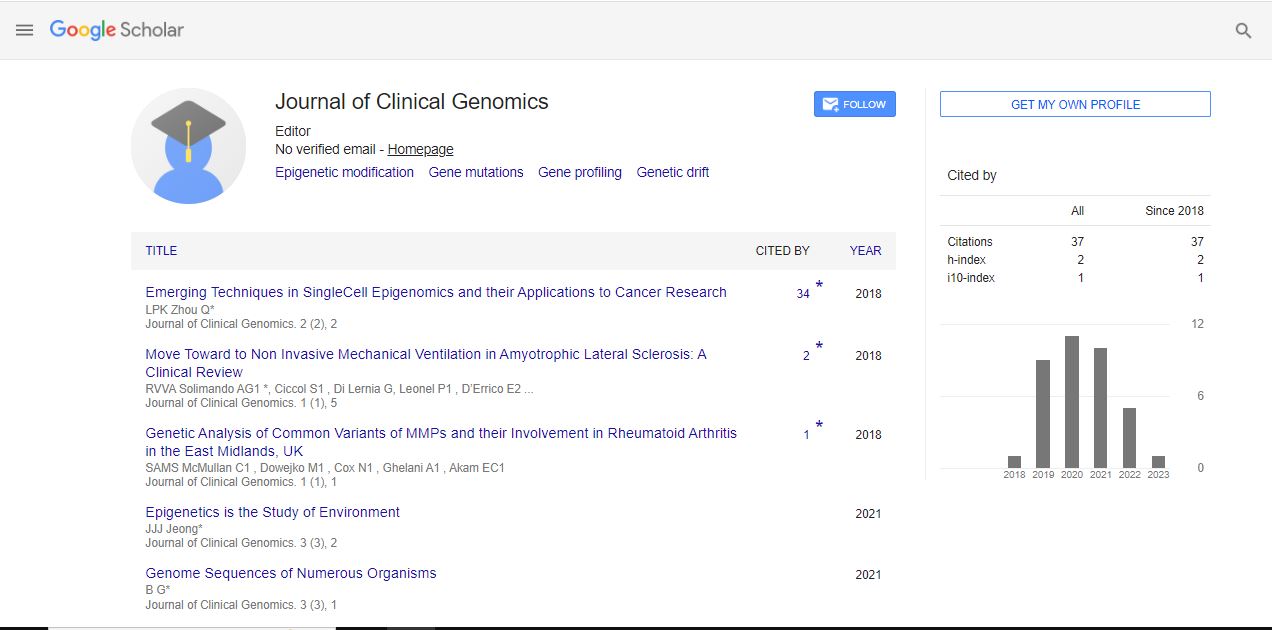Commentary, J Chromatography Res Vol: 6 Issue: 3
Exploring Ion-Exchange Chromatography: Principles and Applications
Liang Wang*
1Department of Bio-Chemistry, University of Illinois at Chicago, Chicago, USA
*Corresponding Author: Liang Wang,
Department of Bio-Chemistry, University of
Illinois at Chicago, Chicago, USA
E-mail: wang.liang@uni.edu
Received date: 05 September, 2023, Manuscript No. JCGR-23-116807;
Editor assigned date: 07 September, 2023, PreQC No. JCGR-23-116807 (PQ);
Reviewed date: 21 September, 2023, QC No. JCGR-23-116807;
Revised date: 29 September, 2023, Manuscript No. JCGR-23-116807 (R);
Published date: 06 October, 2023 DOI: 10.36648/JCGR.1000067.
Citation: Wang L (2023) Exploring Ion-Exchange Chromatography: Principles and Applications. J Chromatography Res 6:3.
Description
Ion-Exchange Chromatography (IEC) is a fundamental and widely applied technique in the field of chromatography. It allows the separation, purification, and analysis of molecules based on their net charge. IEC relies on the electrostatic interactions between charged solute molecules and oppositely charged immobilized ions on a solid support, commonly referred to as the ion-exchange resin.
Principles of ion-exchange chromatography
Ion-exchange chromatography is a separation technique based on the reversible interaction between charged molecules in a sample and charged sites on a solid stationary phase, known as the ion-exchange resin. It exploits the differences in the ionic properties of molecules to separate them based on their net charge. These are the fundamental principles of ion-exchange chromatography:
Ion-exchange resins: IEC employs ion-exchange resins as stationary phases, which consist of insoluble, porous matrices functionalized with charged functional groups. These functional groups can be either cation-exchange (positively charged) or anionexchange (negatively charged). Commonly used cation-exchange groups include sulfonate, carboxylate, and phosphonate, while anionexchange groups include quaternary ammonium and tertiary amine.
Analyte interaction: The analytes to be separated are typically charged molecules such as proteins, nucleic acids, or small ions. They interact with the resin through a process of ion exchange. Positively charged analytes will bind to the negatively charged anion-exchange resin (and vice versa for negatively charged analytes with cationexchange resins). The strength of interaction depends on the charge, size, and shape of both the analyte and the resin.
Modes of ion-exchange chromatography
The separation process in ion-exchange chromatography can be classified into two types:
Anion-Exchange Chromatography (AEC): AEC separates and purifies negatively charged molecules. It is widely used in the purification of nucleic acids, proteins, and other biomolecules.
Applications include DNA and RNA purification, monoclonal antibody purification, and the isolation of negatively charged small molecules.
Cation-Exchange Chromatography (CEC): CEC is employed for the separation of positively charged molecules. This mode is often used in the purification of proteins, peptides, and some pharmaceutical compounds. Notable applications include the purification of enzymes, antibodies, and amino acids.
Applications of ion-exchange chromatography
Ion-exchange chromatography finds extensive applications in various scientific and industrial fields such as:
Biochemistry and biotechnology: IEC plays a crucial role in the isolation and purification of biomolecules. In biochemistry and biotechnology, it is commonly used for the purification of proteins, nucleic acids, and other biologically relevant molecules. For instance, it is instrumental in the production of monoclonal antibodies, DNA sequencing, and the purification of enzymes used in molecular biology techniques.
Pharmaceuticals: In the pharmaceutical industry, IEC is employed for the purification and analysis of drug compounds. It is used to separate and quantify pharmaceutical impurities and to purify Active Pharmaceutical Ingredients (APIs). The stringent quality control measures in pharmaceuticals rely on the accuracy and precision of IEC.
Environmental analysis: IEC has applications in environmental analysis, particularly in the determination of ions and heavy metals in water and soil samples. It is used in water treatment plants and environmental monitoring to ensure compliance with regulatory standards.
Food and beverage industry: IEC is used for the analysis of various ions, such as cations and anions, in food and beverages. It aids in quality control and safety assessment by identifying and quantifying contaminants, preservatives, and additives.
Clinical diagnostics: IEC is utilized in clinical diagnostics for the separation and quantification of ions and biomarkers in biological samples. It contributes to the diagnosis and monitoring of diseases, including diabetes and
Conclusion
Ion-exchange chromatography continues to be a fundamental tool in analytical chemistry, biochemistry, and various industries. It offers unparalleled selectivity based on charge interactions and is a cornerstone of the purification and analysis of charged molecules. As technology evolves and new challenges emerge, IEC will adapt, remaining at the forefront of analytical techniques and contributing to scientific discoveries across multiple domains. Complex samples, such as proteomic or metabolomic mixtures, pose challenges in IEC due to the potential for co-elution and reduced resolution. Future advancements will focus on improving the separation of complex samples.
 Spanish
Spanish  Chinese
Chinese  Russian
Russian  German
German  French
French  Japanese
Japanese  Portuguese
Portuguese  Hindi
Hindi 